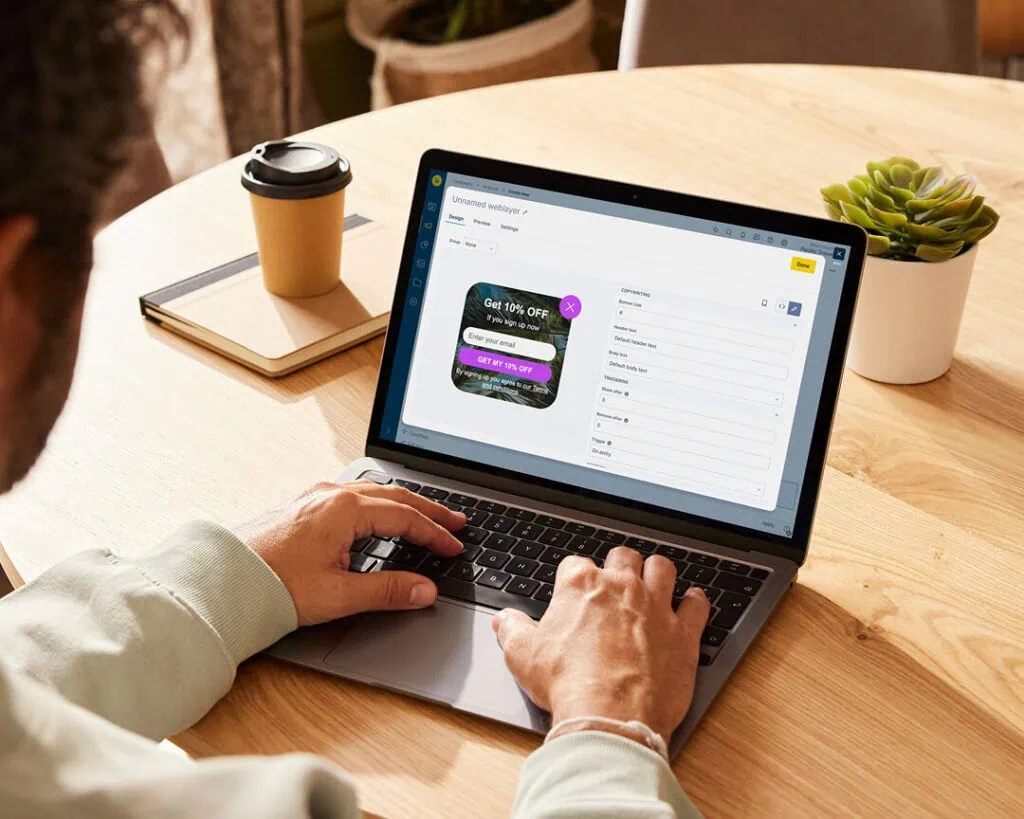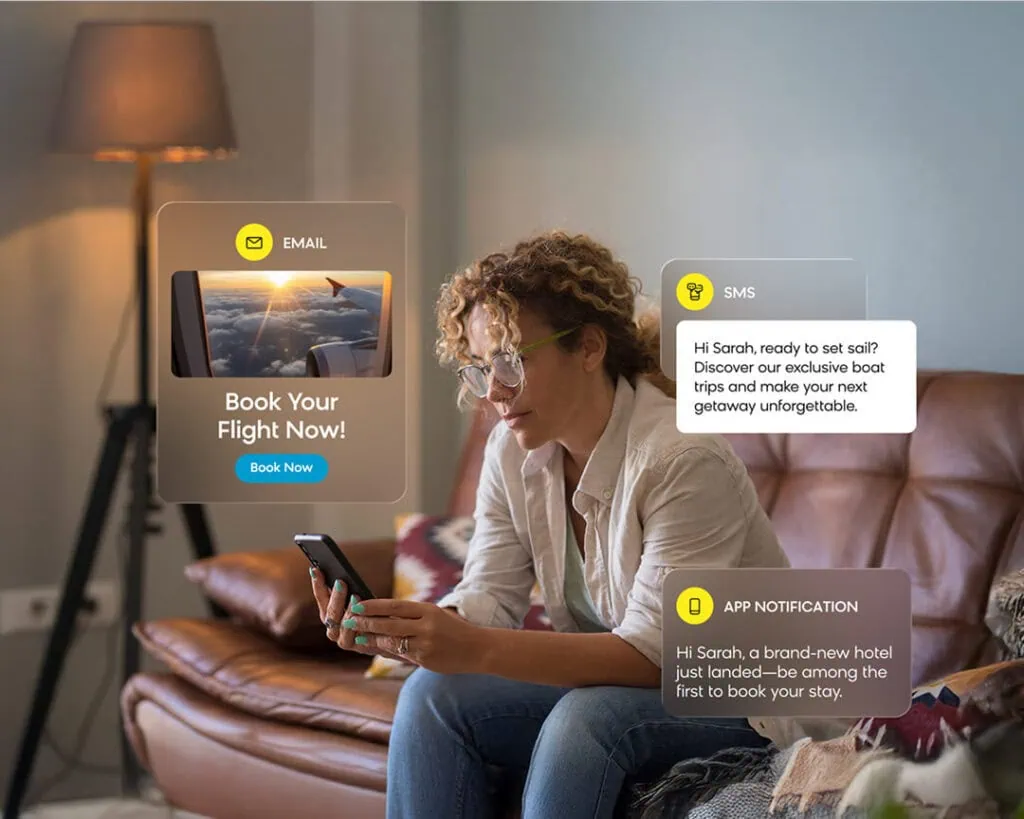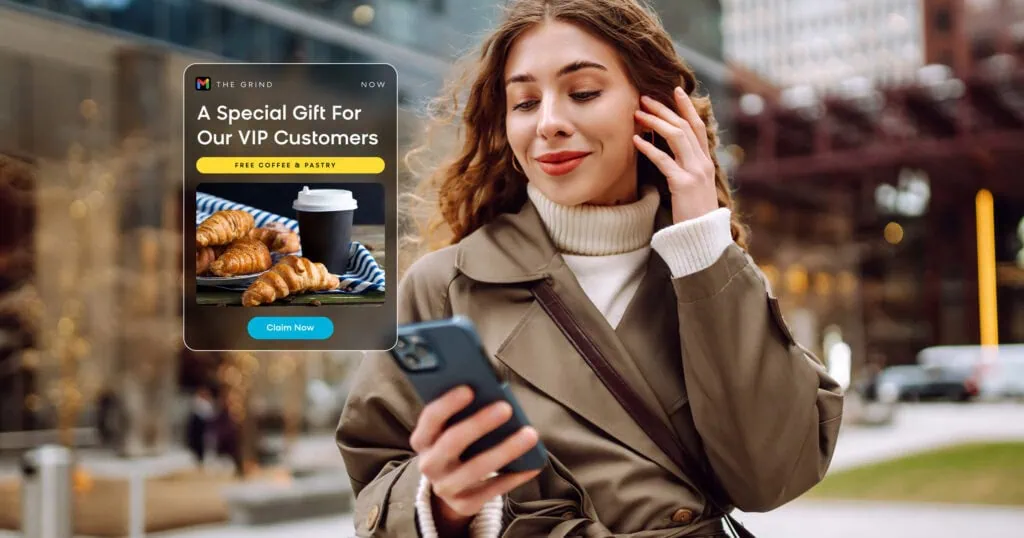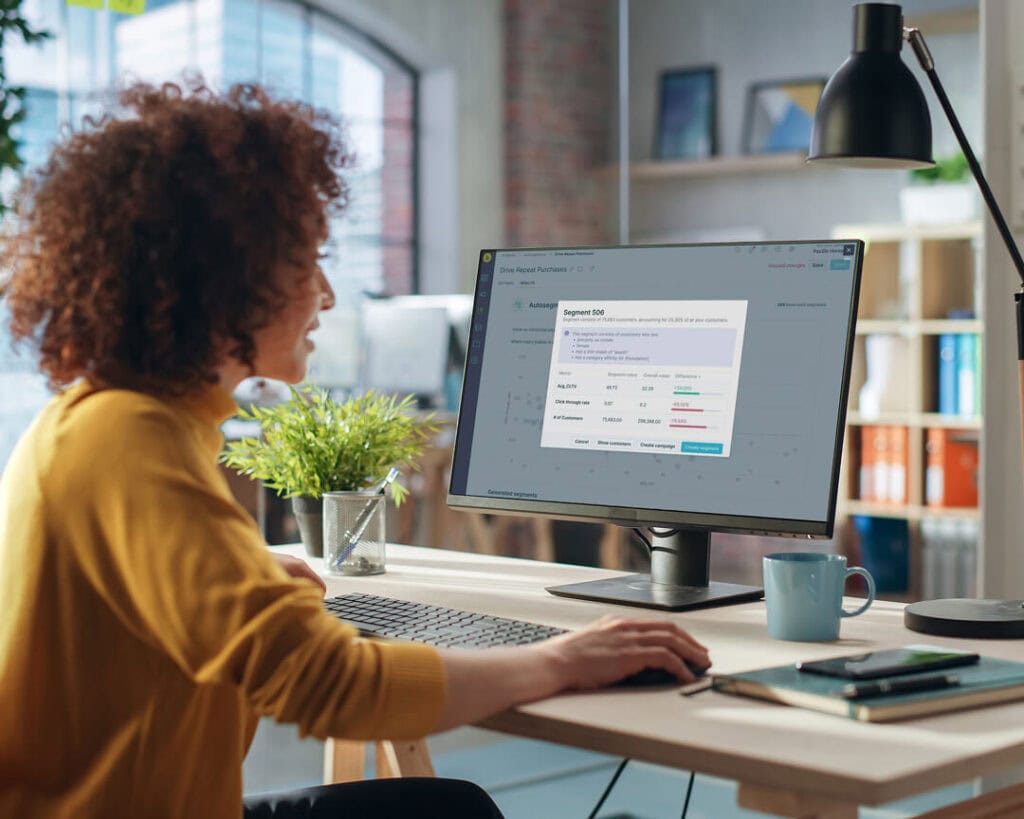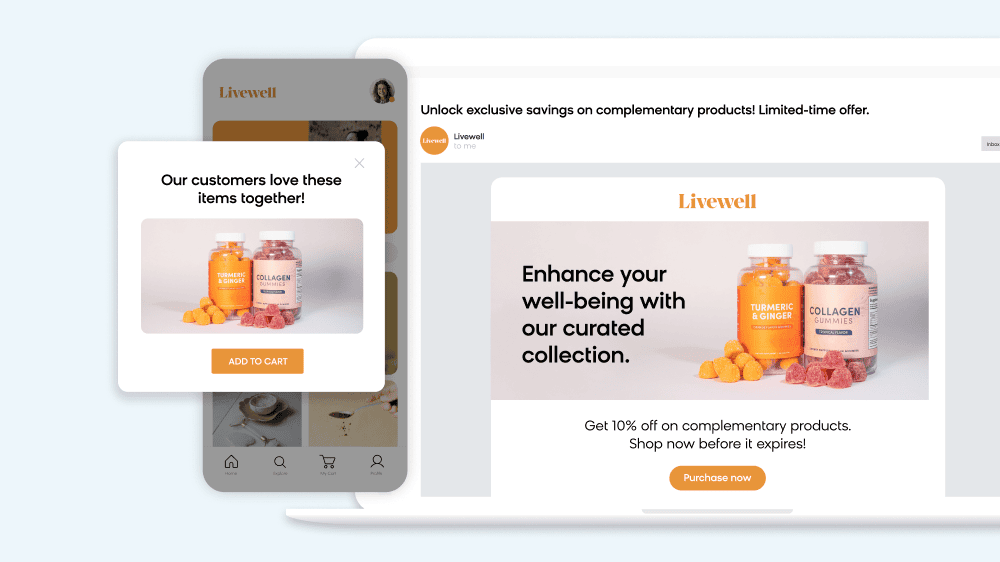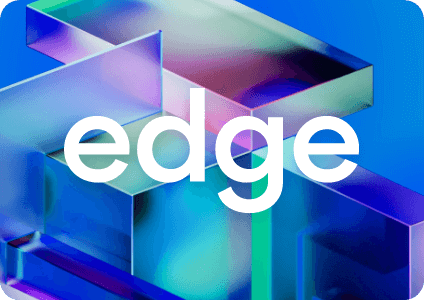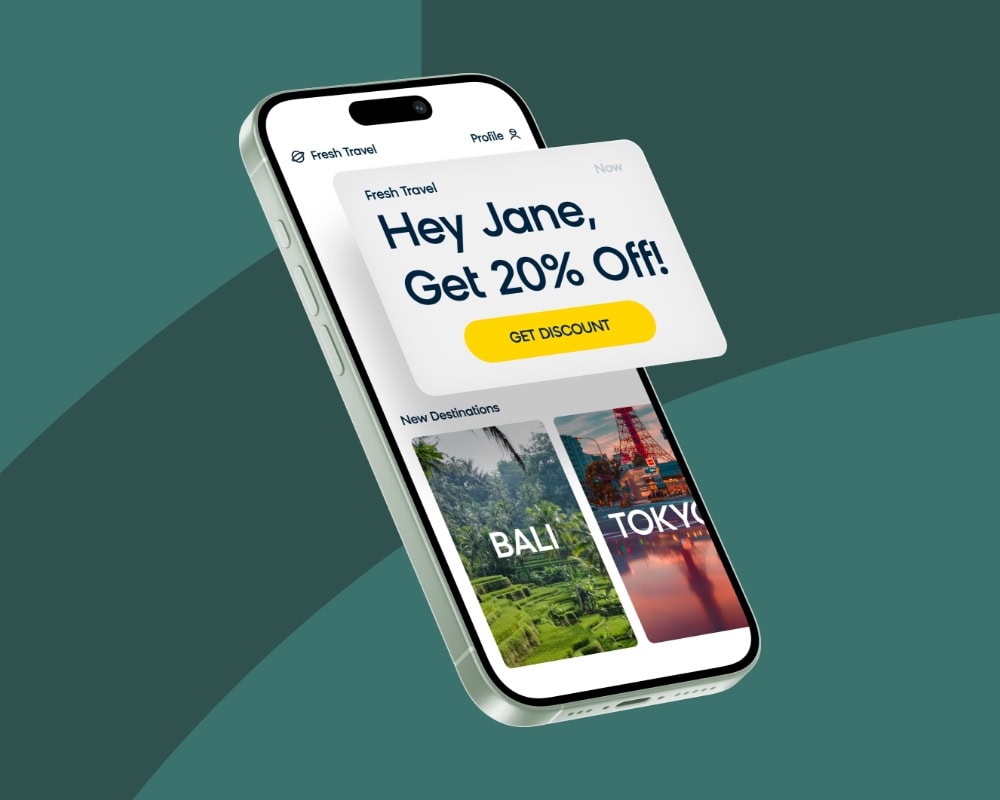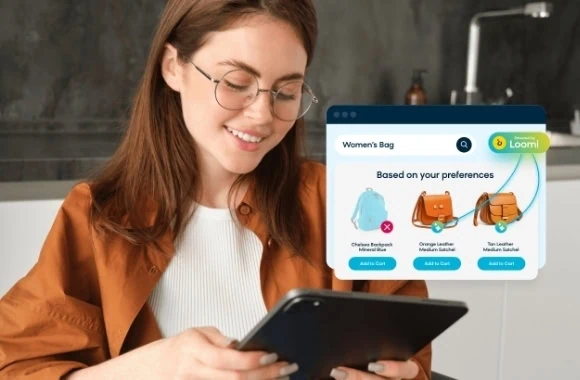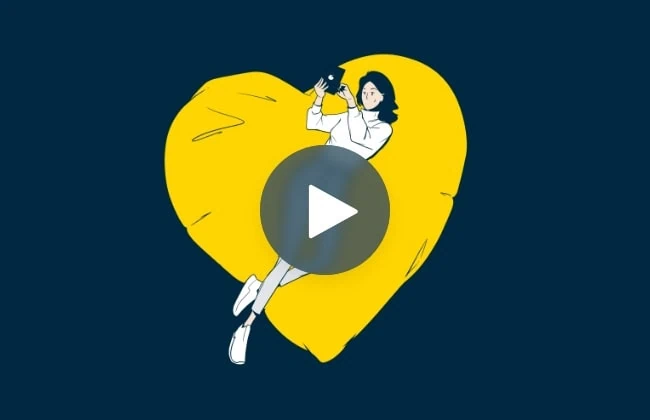Imagine this: You just sent a perfectly timed email. The customer clicks through, lands on your site, and then…nothing. No follow-up message. No personalized banner. No acknowledgment that they just engaged with your campaign seconds ago.
The experience breaks. And so does the journey.
This is the reality for most brands today: They’ve mastered orchestration across email, SMS, and push — but their website still operates like a separate entity. And in doing so, they’re missing the most critical touchpoint in the entire customer journey.
Why Web Personalization Can’t Be an Afterthought
Here’s what orchestration looks like for most marketing teams: You build sophisticated journeys across email, SMS, and push. You trigger messages based on real-time behavior. You A/B test timing, content, and offers. You track every click, open, and conversion.
And then customers land on your website — where none of that intelligence follows them.
Think about what that looks like in practice. You send a cart abandonment email with a 15% discount. The customer clicks through, ready to complete their purchase. But when they land on your site, there’s no mention of the discount. No personalized message acknowledging they came from your email. Just a standard homepage experience that treats them like a stranger.
Or consider this: A customer browses your site, adds items to their cart, but doesn’t check out. You trigger an SMS reminder. They ignore it. Then they come back to your site two days later — and you have no way to show them a web banner reinforcing that same message or offering an incentive to convert.
The web becomes a black hole in your orchestration strategy, and it’s often the most high-intent touchpoint of all. You’re running sophisticated, behavior-driven campaigns across every other channel, but your highest-traffic touchpoint — your website — can’t participate in the conversation.
This isn’t just a workflow issue. It’s a strategic gap. That’s because if your web experiences aren’t part of your journey orchestration, you’re not actually doing omnichannel personalization. You’re doing multi-channel messaging with a disconnected website.
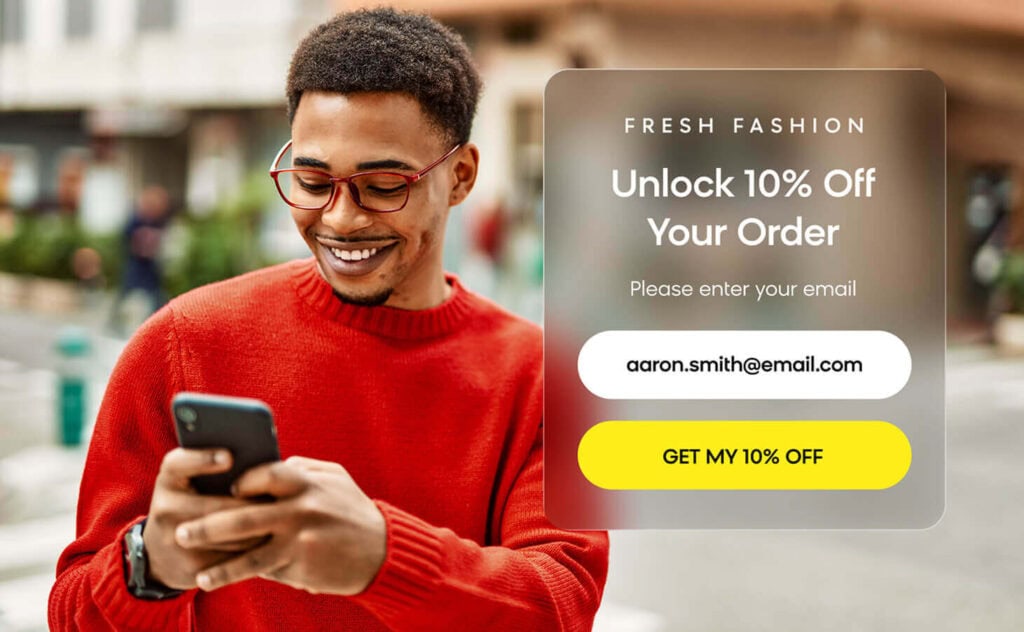
What True Journey Orchestration Actually Looks Like
Real orchestration means every touchpoint — including the web — operates from the same playbook. It means your on-site personalization responds to the same triggers, behaviors, and campaign logic as your email, SMS, and push. It’s about aligning their intelligence through shared campaign logic and centralized decisioning, so every touchpoint reacts to the same customer data and intent.
That’s the bar. And it’s what marketers should expect from a journey orchestration platform.
So what does that look like in practice? It means you’re building a journey in one place. A customer abandons their cart, you send an email. If they don’t open it within 24 hours, you trigger an SMS. And if they visit your site during that window, you automatically display a personalized banner with an offer — right there in the same journey canvas.
It’s all connected. It’s all visual. And it’s all controlled by you — the marketer.
This is true unified orchestration. It’s not just having multiple channels. It’s ensuring those channels actually work together, so customers get experiences that feel seamless, relevant, and personal, no matter where they engage.
This is exactly what you can do with Bloomreach Engagement, which offers weblayers available directly in scenarios. You can trigger personalized on-site experiences — banners, pop-ups, embedded content blocks — based on the same real-time behaviors and campaign logic that drive your messaging. No module switching, no disconnected workflows, and no hoping that your web team remembered to activate the right banner at the right time.
Why This Matters: Control, Consistency, and Conversion
Marketers Get the Control They’ve Been Missing
When web personalization is separate from your journey orchestration, you lose control. You’re managing campaigns in one place and web experiences in another, hoping they align. That creates operational overhead, slows down execution, and introduces room for error.
When everything lives in one journey builder, you get speed, visibility, and, above all, you get the ability to iterate quickly without coordinating across multiple teams or tools.
For lean marketing teams, that’s not just a convenience — it’s a competitive advantage.
Customers Get Experiences That Actually Make Sense
When your web experiences are disconnected from your messaging, customers notice. They get emails about a sale, click through, and see…nothing. Or worse, they see a conflicting message.
When web personalization is part of your orchestration, your on-site messaging responds to the same triggers and behaviors as every other channel. That means:
- Consistency across touchpoints. If someone didn’t open your email, show them a banner when they visit. If they abandoned their cart, greet them with a personalized offer when they return.
- Real-time relevance. Trigger web experiences based on what’s happening right now — not what happened three days ago in a batch process.
- Smarter fallback logic. If a customer doesn’t engage with one channel, seamlessly shift to another — including the web
The result? Journeys that feel connected, not fragmented, and customers who convert because the experience actually reflects where they are.
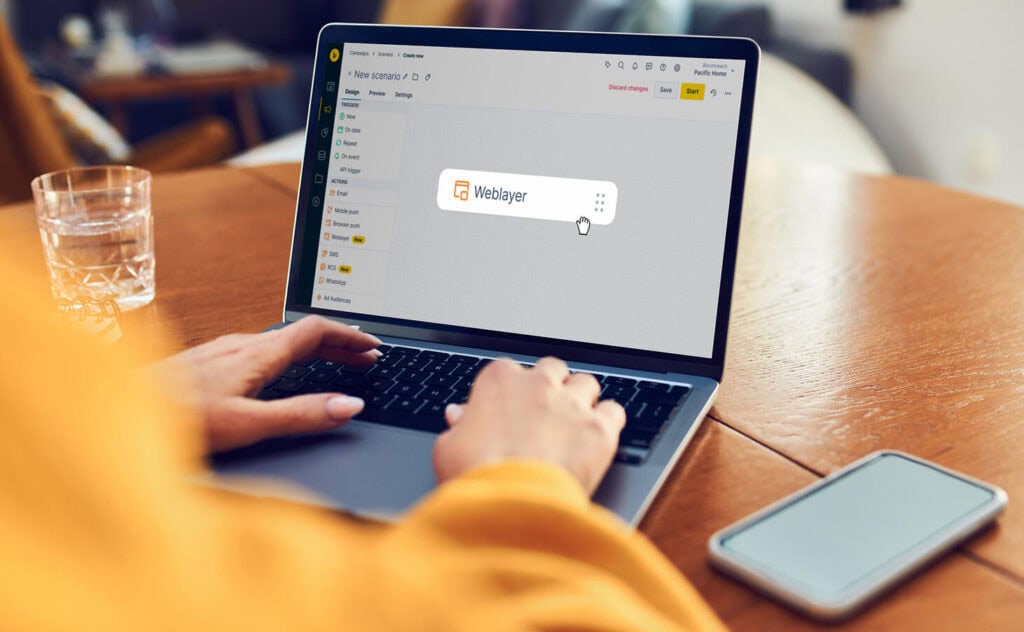
How Leading Brands Can Orchestrate Web Experiences Alongside Every Channel
Here’s where this gets practical. When web personalization is part of your orchestration strategy, you can build experiences that adapt to how customers actually behave — not just how you hope they’ll behave.
Fashion: VIP Early Access That Actually Converts
Give your VIP customers early access to a new collection via SMS. If they don’t engage or purchase within your target window, trigger a weblayer when they visit your site, offering an exclusive, time-sensitive discount to close the deal. Once they purchase, the weblayer simply disappears.
Travel and Hospitality: Recover Bookings Before They’re Gone
A customer searches for flights, adds them to their cart, but doesn’t book. That’s when you send a reminder email. If they don’t respond, show a personalized weblayer when they return to your site, offering free cancellation or a small discount code visible only to them. Turn abandoned searches into confirmed bookings.
Grocery: Nudge Customers Toward Items They Forgot
Remind customers about frequently purchased items missing from their current cart, or prompt them to reorder staples that are due for replenishment. Start with an email, then if there’s still no order, display a weblayer highlighting those specific items with a “Quick Reorder” button.
Cosmetics: Replenishment Reminders That Educate and Convert
Send an email reminding customers to repurchase products they’ve likely run out of (e.g., mascara every three months or serum every six weeks). Include educational content like “How to get the most out of your serum.” If they don’t engage, show a weblayer with a quick repurchase link or a video tutorial on applying the product.
Fintech: Guide Users Through Onboarding, Step by Step
After initial signup, send a series of emails guiding new users through onboarding (link your bank account, make your first deposit, etc.). If a user gets stuck, send a reminder. If that doesn’t work, display a weblayer on their dashboard prompting them to complete the next step: “Link your bank account to unlock transfers!” and help users realize value faster.
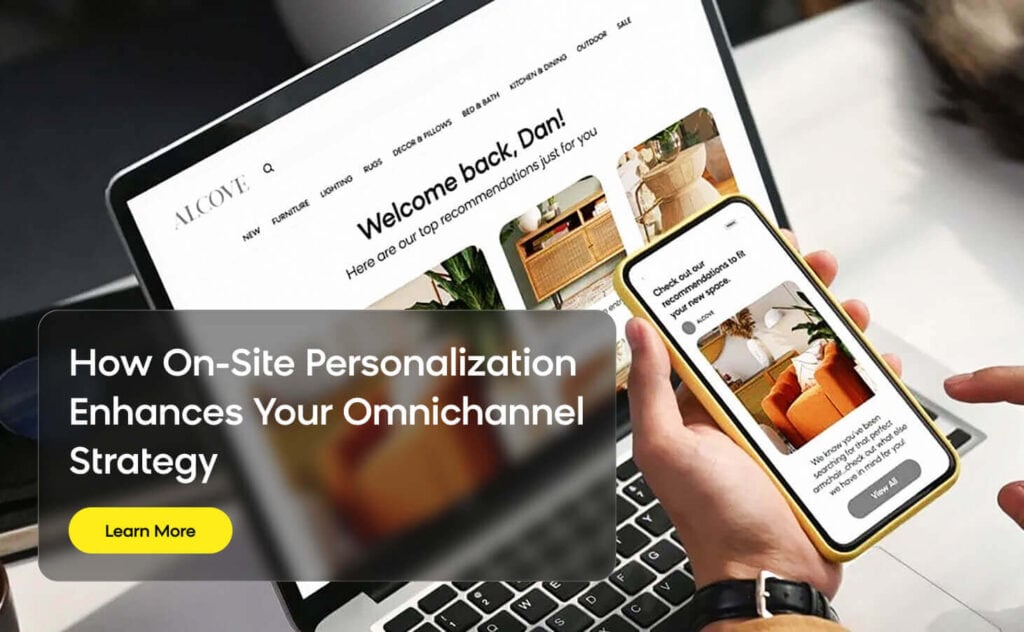
The Bottom Line: Orchestration Isn’t Complete Without the Web
These aren’t hypothetical use cases. They’re the kinds of coordinated, contextual experiences that drive measurable performance — and they’re only possible when web personalization is part of your orchestration strategy, not separate from it.
Omnichannel orchestration isn’t just about having multiple channels. It’s about unifying them so every touchpoint works together to move customers forward. And this is what your customers want.
Your customers now expect consistency and relevance no matter where they are in their journey, whether they’re reading an email, browsing your site, or scrolling on mobile.
Want to see how it’s done? Explore the product documentation or request a demo to learn how Bloomreach’s scenarios enable you to orchestrate personalized journeys across every channel — including the web.

